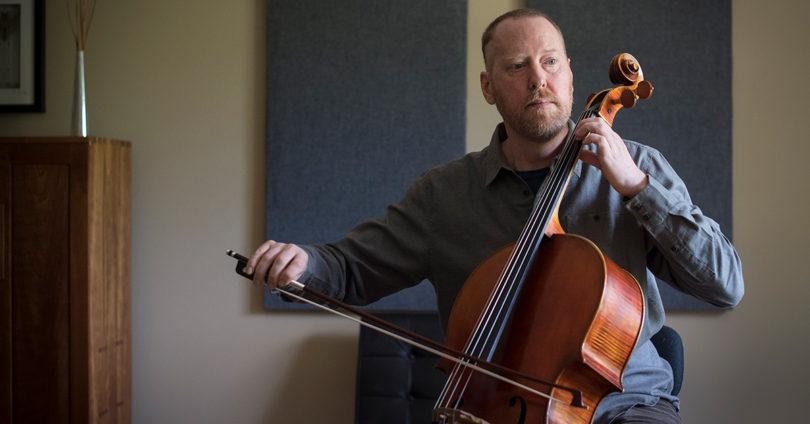Paul Hudspith wasn’t too concerned when he began experiencing the odd dizzy spell. But when a dull headache set in for several weeks, he decided to see his family doctor, just in case. His physician ordered an MRI.
But before Paul could get to his appointment, he woke up at 2 a.m. one morning in agony. “I had an absolutely devastating headache,” he says. “I started to vomit.”
Paul knew it was time to go to the hospital. He and his wife sped down the highway from their home in King City, Ont. to Sunnybrook, knowing it was an excellent trauma centre.
At Sunnybrook, the emergency team discovered that a large tumour was bleeding into his brain. To save his life, the team rushed Paul into brain surgery.
The news was initially encouraging: the tumour had been successfully removed. But when it was biopsied, the diagnosis was shocking. It was a glioblastoma, a highly aggressive brain tumour giving patients an average survival time of 12 to 18 months.
Suddenly, the father of two worried about his future, and that he would no longer be able to do the things he loved, such as spending time with his family – or performing music.
“I play cello in the Paskke String Quartet and the York Symphony Orchestra,” says Paul, now 53. After a day’s work as a professional engineer and an executive at an engineering firm, Paul’s evenings are typically filled with music.
“I wondered, Can I play cello?” he recalls. “Music is very important to me. It’s an incredible creative outlet. The thought of losing mobility or cognitive abilities to the point where I couldn’t play cello was quite horrifying.”

Paul Hudspith with his wife, Francine, and dog, Beau
Reeling from his diagnosis and still recovering from major brain surgery, Paul got some good news on the day he was diagnosed: he was eligible for a new, world-leading trial at Sunnybrook.
“I felt like it was meant to be,” he says of being selected for the study.
Researchers at Sunnybrook are studying focused ultrasound (FUS) as a non-invasive way to open the blood-brain barrier and deliver – or enhance – chemotherapy. The blood-brain barrier protects the brain from toxic compounds. It is semi-permeable, like a fine sieve that stops even the smallest molecules in the bloodstream from entering into the brain. While protective, this can also prevent key medications from reaching cancerous cells in the brain.
To take part in the study, patients wear a helmet-like device in an MRI machine. Tiny microscopic bubbles are also injected into the patient’s bloodstream. The helmet delivers pulses of ultrasound energy (a thousand waves of sound) to a specific area of the brain, shaking the microbubbles and causing them to open the blood-brain barrier temporarily.
“In Phase 1 of this study, we found we can safely open the blood-brain barrier. It’s quick, reversible and we don’t see any major adverse effects,” says Dr. Nir Lipsman, principal investigator and director at Sunnybrook’s Harquail Centre for Neuromodulation.
He adds that the current Phase 2 study, in which patients receive focused ultrasound on the first day of each chemotherapy cycle, will also track tumour response and involve genetically profiling the tumours. “With glioblastomas, no two tumours are alike,” Dr. Lipsman says.
The idea is to determine whether allowing chemotherapy past the blood-brain barrier can help kill cancer cells and prevent the tumour from growing. As it is non-invasive, it potentially offers patients a safer way of enhancing their chemo regimen.
Paul says that despite his anxiety over being in an MRI machine for hours, sedatives and “the incredibly compassionate and supportive” staff have helped him get through the six sessions he’s completed.
“With the support of the FUS team, the treatment is entirely doable and I never felt alone or scared,” he says. “It gives me a chance at a better prognosis and I’m proud to be one of the pioneers for this exciting new treatment.”
He’s feeling well – exercising and doing yoga. He’s also playing cello and performing again, and says that music is key to his overall wellness.
“As they say, music is good for the mind,” he says.








